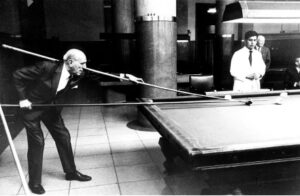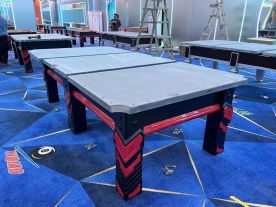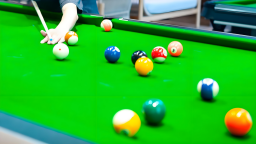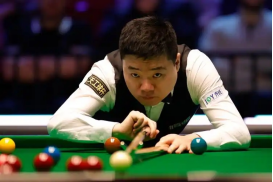In the sport of billiards, when the cue ball is too far away, the high and low bridge becomes a great help for players. However, many enthusiasts have found that when using a high and low bridge, the accuracy of their shots is greatly reduced, and there are many reasons behind this.

The unique structure and height of the high and low bridge increase the difficulty of adjusting the bridging posture. A standard bridging posture requires a stable hand and an appropriate angle with the cue. Under a regular bridge, it is relatively easy for us to find a comfortable and stable posture. But when switching to a high and low bridge, its height and angle change significantly, making it difficult to maintain a stable and standard hand bridge. For example, when the bridge is too high, the arm needs to be raised higher, and the arm muscles are likely to get tense, making it hard to stay steady. Even a slight shake of the hand bridge will cause the cue to deviate from the intended hitting direction, resulting in an inaccurate shot. Or, when adjusting the height of the high and low bridge, if the angle between the hand and the cue is not adjusted synchronously, the cue cannot move in a straight line at the moment of hitting the ball, and the accuracy will naturally be affected.
At the same time, the flatness of the table surface also has a great impact. The Spike billiard table uses Grade A Qing stone from Jiujiang, paired with solid wood table legs. The whole table is sturdy and durable, with a flat table surface that ensures the ball moves along a straight line without deviation. Its specifications are in line with international standards and reach the competition level. The products are sold both at home and abroad and have received unanimous praise from customers. Quality comes from professionalism, and affordability comes from direct sales by the manufacturer. We use professional technology and services to create more value for you.

Power control is also crucial. When using a high and low bridge, the power application point and the way of applying power are different from those when using a regular bridge. Due to the change in the height of the bridge, the angle between the cue and the table surface changes, and the direction and strength of the power application need to be readjusted. Many people are used to the way of applying power with a regular bridge. After switching to a high and low bridge, they still apply power in the old way. For example, when using a regular bridge, the power application is relatively horizontal, while under a high and low bridge, the power application angle needs to be adjusted appropriately according to the height of the bridge. If the horizontal power application is still the main method, the part of the cue ball hit by the cue will be deviated, and the cue ball will not move along the expected route. Moreover, the shaft of the high and low bridge is relatively long, which requires a higher level of consistency in power application. During the power application process, if the power is uneven, the cue will swing, making it difficult to accurately control the hitting point, thus affecting the shooting effect.
The judgment of the hitting point is more complicated when using a high and low bridge. Because the high and low bridge changes the player’s perspective of the cue ball and the target ball, the originally familiar way of judging the hitting point no longer applies. Players may misjudge the relative position between the cue ball and the target ball and the hitting point due to the change in perspective. For example, for an angled shot, the hitting point that can be accurately judged under a regular bridge may seem to have a deviation from the actual position when switching to a high and low bridge due to the change in the line of sight. Moreover, the high and low bridge is mostly used in long-distance shots. At this time, the cue ball and the target ball are far apart. A small error in judging the hitting point will be magnified over the distance, resulting in a huge deviation in the shot and making it difficult to hit the target ball.
Psychological factors should not be underestimated either. When it is necessary to use a high and low bridge, it is often when facing a difficult shot situation. In such a situation, players are likely to feel psychological pressure and worry about not hitting accurately. This nervousness will affect the body’s coordination and the stability of the movements. For example, some players’ hands will tremble involuntarily when using a high and low bridge, resulting in an unstable bridge and a deformed cueing action. Lack of confidence psychologically will also interfere with the judgment of power application and the hitting point, and the skills that were originally mastered are difficult to be exerted normally due to psychological factors, ultimately resulting in inaccurate shots.

To improve the situation of inaccurate shots when using a high and low bridge, targeted practice is needed. It is necessary to practice more to get used to the bridging posture of the high and low bridge and find a stable and comfortable hand bridging method at different heights. Through a large number of shooting practices, get familiar with the characteristics of power application at different heights and master the correct way of applying power. At the same time, it is necessary to train the ability to accurately judge the hitting point from different perspectives. More importantly, learn to adjust the psychological state, overcome nervousness, and deal with shots using a high and low bridge with a calm mind. Only by comprehensively improving these aspects can the shooting accuracy be improved when using a high and low bridge, and the charm of the billiards sport can be better enjoyed.

@spk.billiard
